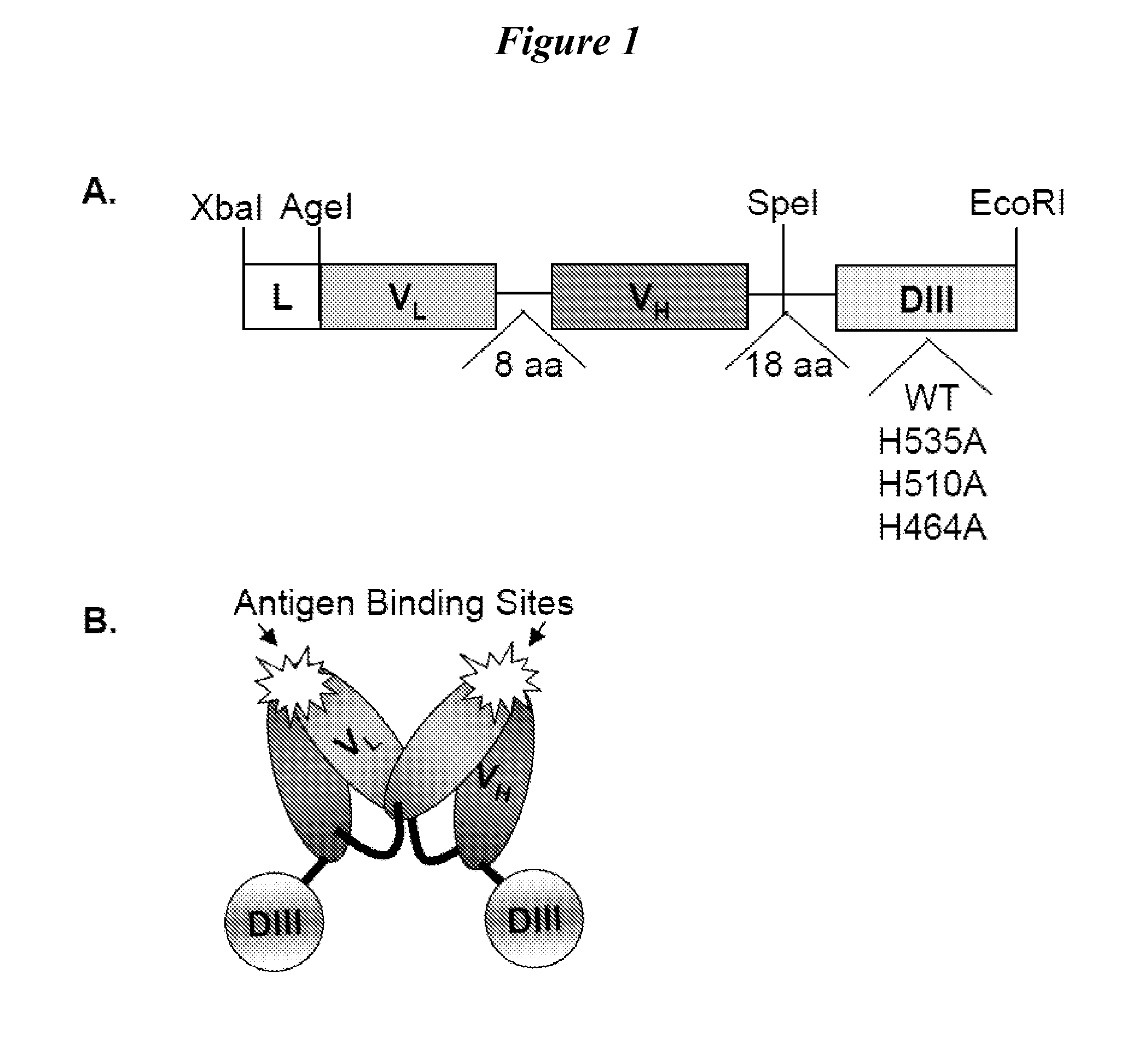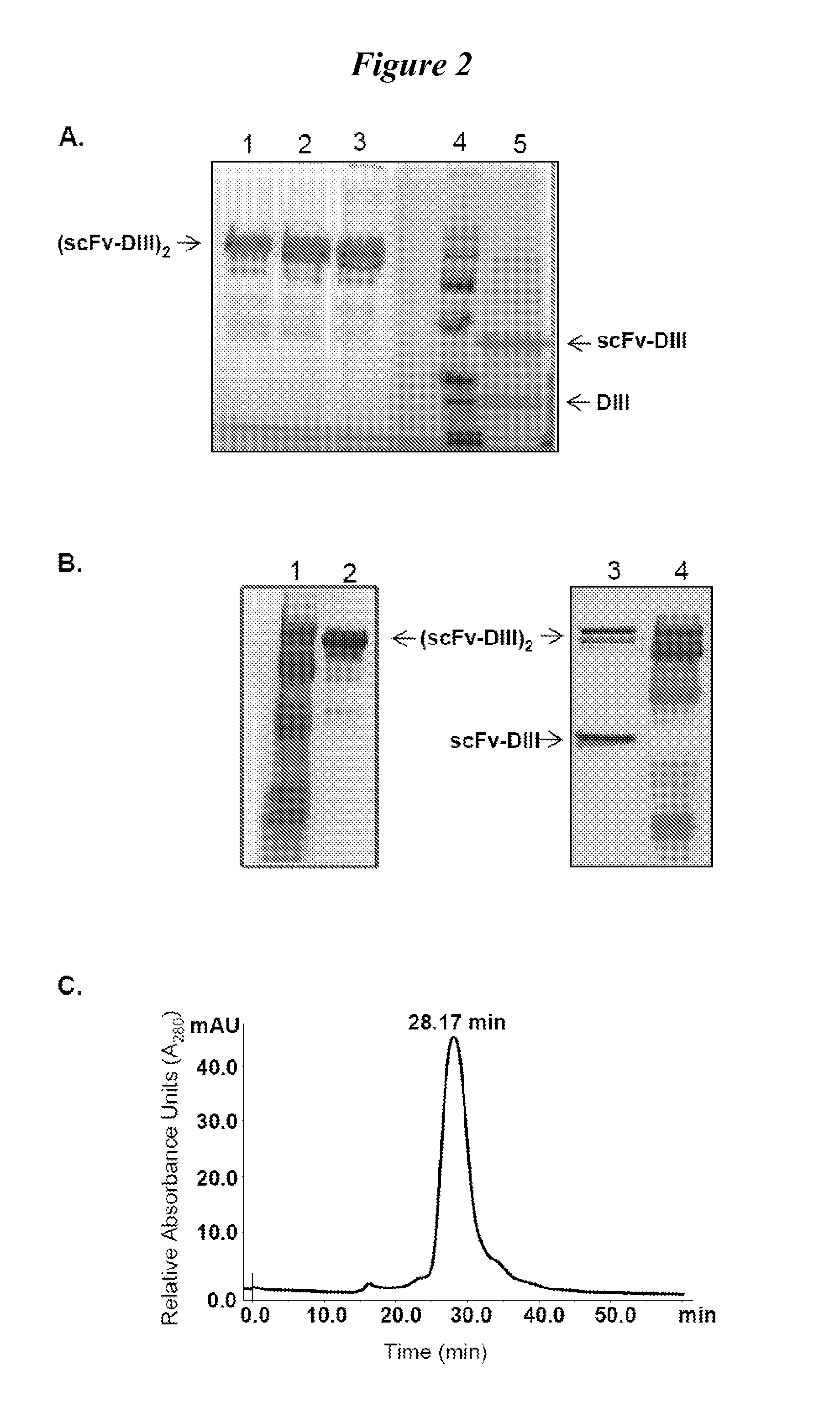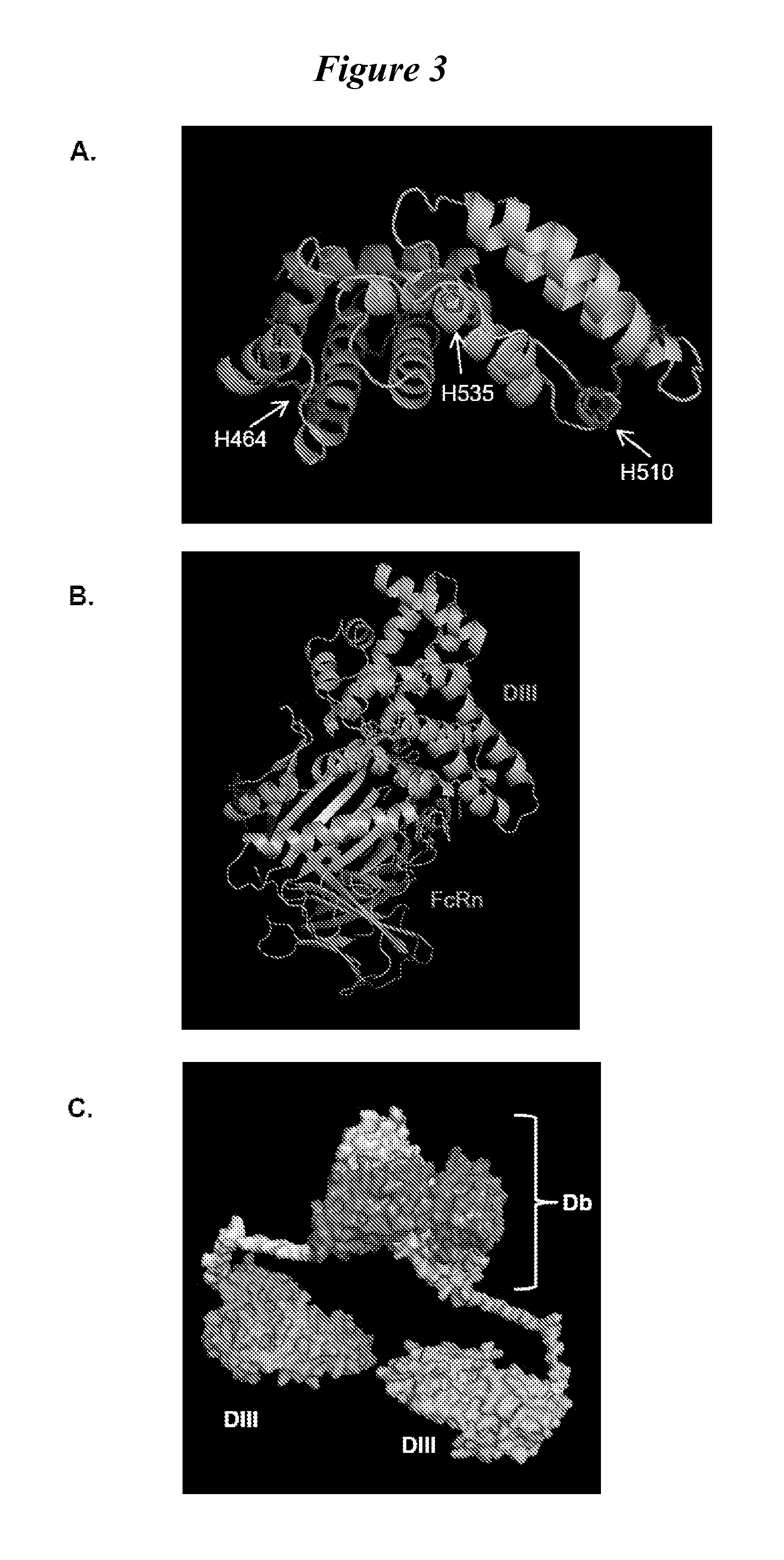Human protein scaffold with controlled serum pharmacokinetics
a human protein and serum technology, applied in the field of constructs, can solve the problems of increasing antibody drug cost, uncontrollable pk, unwanted side effects in clinical applications,
- Summary
- Abstract
- Description
- Claims
- Application Information
AI Technical Summary
Benefits of technology
Problems solved by technology
Method used
Image
Examples
example 1
[0101]We tested fusion proteins consisting of a well studied antibody fragment targeting carcinoembryonic antigen (CEA) and either the HSA DIII wild type (WT, non-mutated) or one of three HSA DIII variants, each incorporating a mutation of H535, H510 or H464 to alanine residue. Xenografted athymic nude mice were injected with 1241-labeled Db-DIII or Db proteins, and serial small animal PET / CT imaging studies were performed to evaluate the ability of the HSA DIII to modulate the serum persistence of the Db in vivo. In addition, we were able to draw conclusions about the relative importance of the H535, H510 and H464 residues for FcRn binding and circulation persistence of albumin.
Materials and Methods
Generation of Db-DIII Constructs
[0102]HSA DIII genes were amplified by polymerase chain reaction (PCR) using commercial HSA cDNA (OriGene Technologies, Rockville, Md.) as a template and primers introducing 5′ SpeI and 3′ EcoRI restriction sites. The primer sequences were as follows:
Forwa...
example 2
Binding Studies with Alexa Fluor 647 Conjugated DIII Proteins
[0124]The fluorophore Alexa Fluor 647 (1.25 kDa) was conjugated to HSA, DIII WT, H535A, H510A and H464A proteins using the Alexa Fluor 647 Protein Labeling Kit (Invitrogen, Eugene, Oreg.) according to manufacturer's instructions. Dilutions of each fluorescent protein ranging from 0.316 to 3160 nM (in triplicates) were incubated with confluent 293 human embryonic kidney cells expressing human FcRn (Petkova et al., Int Immunol. 2006; 18:1759-1769) at pH 6.5 in a round bottom 96-well plate. Dilutions of Alexa Fluor 647 conjugated HSA were also incubated with 293 cells devoid of FcRn expression (control reaction). Following a washing step with 1×PBS (pH 6.5), the cells were imaged by the Maestro™ In-Vivo Fluorescence Imaging System (CRi, Woburn, Mass.) using Deep Red (671-705 nm) excitation and Red (700 nm longpass) emission filters. Same size regions of interest (ROI) were drawn in each well and the fluorescent signal was mea...
example 3
[0127]Generation and conjugation of aptamer molecules to selected DIII scaffold(s). Modified target specific aptamer, containing nuclease-resistant pyrimidines 2′-Fluoro UTP and 2′F CTP can be generated by runoff transcription from double-stranded DNA template bearing a T7 RNA polymerase promoter. The transcription reaction can be carried out using the Y639F mutant T7 RNA polymerase. The nucleotides used in the reaction will consist of ATP, GTP, 2′F dCTP and 2′F dUTP. For conjugation of the aptamer to the DIII scaffold, succinimidyl 6-hydrazinonicotinamide acetone hydrazone (SANH) can be reacted with the DIII scaffold lysine residues (Figure below). The bis-aryl hydrazone bond between the two molecules is UV traceable at 354 nM, therefore the conjugation ratio can be determined spectroscopically. Following purification, all conjugated products can be evaluated for their ability to bind the target in vitro (cells) and then in vivo (xenografted mice).
[0128]Conjugation chemistry of the...
PUM
| Property | Measurement | Unit |
|---|---|---|
| pH | aaaaa | aaaaa |
| pH | aaaaa | aaaaa |
| flow rate | aaaaa | aaaaa |
Abstract
Description
Claims
Application Information
 Login to View More
Login to View More - R&D
- Intellectual Property
- Life Sciences
- Materials
- Tech Scout
- Unparalleled Data Quality
- Higher Quality Content
- 60% Fewer Hallucinations
Browse by: Latest US Patents, China's latest patents, Technical Efficacy Thesaurus, Application Domain, Technology Topic, Popular Technical Reports.
© 2025 PatSnap. All rights reserved.Legal|Privacy policy|Modern Slavery Act Transparency Statement|Sitemap|About US| Contact US: help@patsnap.com



